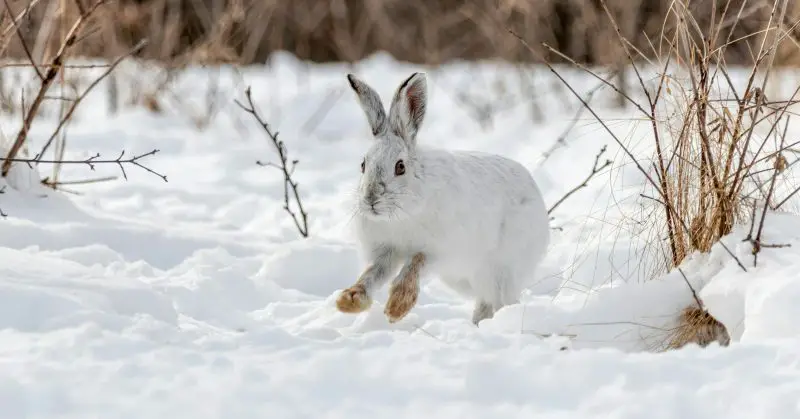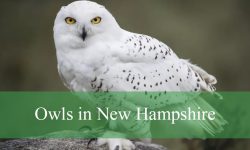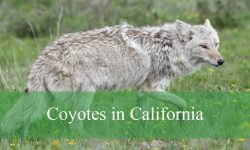Minnesota’s winters are famously harsh, characterized by heavy snowfall, freezing temperatures, and biting winds. Yet, despite these extreme conditions, a resilient creature thrives in this icy wilderness — the snowshoe hare. Known for their remarkable adaptations, snowshoe hares have evolved several physical and behavioral traits that allow them to survive and flourish in the cold Minnesota landscape.
This article explores the fascinating ways these animals manage to endure winter’s wrath and the complex interplay of biology and environment that supports their survival.
Introduction to Snowshoe Hares in Minnesota

The snowshoe hare (Lepus americanus) is a medium-sized mammal native to the boreal forests and northern hardwood forests of North America. Minnesota’s extensive forests and abundant snowfall create an ideal habitat for this species. Snowshoe hares are well known for their large hind feet, which act like natural snowshoes, enabling them to move swiftly across snowy terrain. However, it’s not just their feet that help them survive winter; an array of adaptations from their fur to their behavior plays a crucial role.
Minnesota’s winter season can last for months, with average temperatures often plunging well below freezing. Snow depths can reach several feet, creating a challenging environment for many animals. For the snowshoe hare, these conditions present both obstacles and opportunities. Their survival strategies offer a compelling case study in evolutionary resilience and the balance of nature in cold climates.
Physical Adaptations for Cold Weather Survival
One of the most noticeable adaptations of snowshoe hares is their changing fur color. As winter approaches, their fur transforms from a reddish-brown to pure white. This seasonal camouflage not only protects them from predators but also plays a role in thermal regulation.
Seasonal Camouflage and Insulation
The white winter coat of the snowshoe hare is dense and thick, providing excellent insulation against cold temperatures. This fur traps a layer of warm air close to the hare’s body, minimizing heat loss. The change in coat color is triggered by decreasing daylight hours and cooler temperatures, a biological response finely tuned to the timing of Minnesota’s snowfall.
Beyond its camouflage function, the winter fur has hollow hairs that improve insulation. These hollow hairs trap air, creating a buffer that retains body heat. This adaptation is critical for maintaining the hare’s core temperature during cold nights when temperatures can plummet dramatically.
Large Feet and Snow Navigation
Another physical adaptation critical to winter survival is the hare’s large hind feet. These feet spread out like snowshoes, distributing the hare’s weight over a larger surface area. This feature allows the animal to move efficiently on deep snow without sinking, which would otherwise make escape from predators difficult.
The large feet are covered with fur on the undersides, which adds extra grip and insulation. This fur protects the footpads from frostbite and cold surfaces. The snowshoe hare’s ability to navigate swiftly across snowdrifts allows it to forage for food and evade predators more successfully in the winter months.
Behavioral Adaptations to Survive Harsh Winters
Physical adaptations alone are not enough to survive Minnesota’s winters. Snowshoe hares exhibit a range of behaviors that complement their biology, helping them conserve energy and avoid danger during the cold season.
Foraging Strategies in Winter
Food becomes scarce in winter as many plants die back or become buried under snow. Snowshoe hares adapt by altering their diet and foraging habits. They primarily feed on woody vegetation such as twigs, bark, and buds during this period. This shift requires them to spend more time and energy foraging in exposed areas.
To cope, hares tend to forage near dense cover such as shrubs or thickets where they can quickly hide from predators. This cautious behavior reduces their risk but limits the distance they can safely travel to find food. The snowshoe hare’s ability to digest woody material efficiently allows it to extract the necessary nutrients to survive when leafy greens are unavailable.
Seasonal Activity and Shelter Use
Snowshoe hares are crepuscular, meaning they are most active during dawn and dusk. During winter, this behavior is even more pronounced as they avoid the coldest parts of the day and night. They often rest during the day in concealed locations beneath thick shrubs or in natural depressions known as “forms” in the snow, which provide some protection from wind and cold.
These forms act as natural shelters, reducing exposure to predators and harsh weather. Snowshoe hares frequently rebuild and reuse these resting spots, compacting the snow and using the surrounding vegetation as insulation. This behavioral adaptation minimizes energy loss and maximizes survival chances during long, cold nights.
The Role of Predators and Survival Pressure
Minnesota’s winter landscape is not only challenging because of the cold but also due to the presence of numerous predators. Snowshoe hares are a vital prey species for many animals, including lynx, foxes, owls, and coyotes. The constant threat of predation imposes significant survival pressure.
Predator Avoidance Through Camouflage and Speed
The snowshoe hare’s white winter coat provides essential camouflage against the snowy backdrop, helping it evade detection. When predators approach, the hare relies on its exceptional speed and agility. It can sprint and change direction quickly, a necessary trait to escape the grasp of stealthy hunters.
Despite these defenses, many hares fall prey during winter. This high predation rate is part of a natural population cycle, often linked with the famous lynx-hare population dynamics observed in northern forests. The snowshoe hare’s survival strategies must therefore be continuously effective to maintain the population through harsh winters.
Reproduction and Population Recovery
Surviving winter is not just about individual endurance but also about species continuity. Snowshoe hares breed multiple times a year during warmer months to replenish their numbers. The harsh winter acts as a natural population control, but spring brings renewed growth and expansion.
This reproductive strategy is crucial in Minnesota, where winters are long and survival rates can be low. The ability to reproduce quickly after winter ensures that snowshoe hare populations remain robust despite seasonal challenges.
The Influence of Climate and Habitat on Survival
Minnesota’s diverse forest ecosystems and climate play a significant role in the snowshoe hare’s winter survival. The availability of suitable habitat and the characteristics of each winter season influence how well the hares cope with the cold.
Importance of Dense Forest Cover
Dense coniferous and mixed forests provide essential shelter and food resources for snowshoe hares. The thick underbrush offers hiding spots from predators and harsh winds, while the variety of woody plants supplies winter nutrition. Changes in forest composition or loss of habitat can drastically affect hare populations by reducing their ability to find food and shelter during winter.
Minnesota’s forest management and conservation efforts thus indirectly support snowshoe hare survival by preserving these critical habitats. The interconnectedness of forest health and hare populations highlights the importance of ecosystem balance.
Impact of Changing Winters
Climate change is altering winter patterns in Minnesota, with warmer temperatures and irregular snowfall becoming more common. These changes pose new challenges for snowshoe hares. For instance, reduced snow cover can make the hare’s white winter coat stand out against a brown or patchy background, increasing predation risk.
In addition, fluctuating snow depths affect the hare’s mobility. Without sufficient snow to support their large feet, they may struggle to escape predators or access food sources. Researchers are closely monitoring how snowshoe hares adapt to these shifting conditions, which will influence their long-term survival in Minnesota’s changing winters.
Conclusion
Snowshoe hares are remarkable survivors of Minnesota’s cold winters. Their ability to endure freezing temperatures, deep snow, scarce food, and relentless predators is a testament to their evolutionary success. Through a combination of physical adaptations such as seasonal fur changes and large feet, along with behavioral strategies including careful foraging and shelter use, snowshoe hares navigate some of the most challenging winter conditions in North America.
The continued survival of these hares also depends on healthy forest ecosystems and stable winter climates. As Minnesota’s winters evolve with the changing climate, the fate of the snowshoe hare will serve as a valuable indicator of environmental health. Their story is one of resilience, adaptability, and the delicate balance that sustains life in cold northern forests.
FAQs about Snowshoe Hares in Minnesota Winters
What physical traits help snowshoe hares survive Minnesota’s cold winters?
Snowshoe hares have large, furry feet that act like natural snowshoes, preventing them from sinking into deep snow. Their fur changes from brown to white in winter, providing camouflage and insulation. The dense, hollow hairs in their winter coat trap heat, helping them maintain body temperature during freezing nights.
How do snowshoe hares find food during the winter months?
In winter, snowshoe hares switch to eating woody plants such as twigs, bark, and buds because leafy vegetation is scarce under the snow. They forage mostly near dense shrubs and thickets to stay hidden from predators while searching for food.
How does snowshoe hare behavior change in winter to improve survival?
Snowshoe hares become more active during dawn and dusk to avoid the coldest times of day. They rest in snow depressions called “forms” under shrubs to shield themselves from wind and cold. Their cautious foraging near cover reduces exposure to predators in winter.
Why is camouflage important for snowshoe hares during Minnesota winters?
Camouflage is critical because it helps snowshoe hares blend into the snowy landscape, making it harder for predators like lynx, foxes, and owls to spot them. Their white winter fur greatly increases their chances of survival in a snow-covered environment.
How does climate change affect snowshoe hares in Minnesota?
Warmer winters with less consistent snow cover can disrupt the hare’s camouflage, making them more vulnerable to predators. Changes in snow depth also affect their ability to move and forage efficiently, posing new challenges to their survival.






